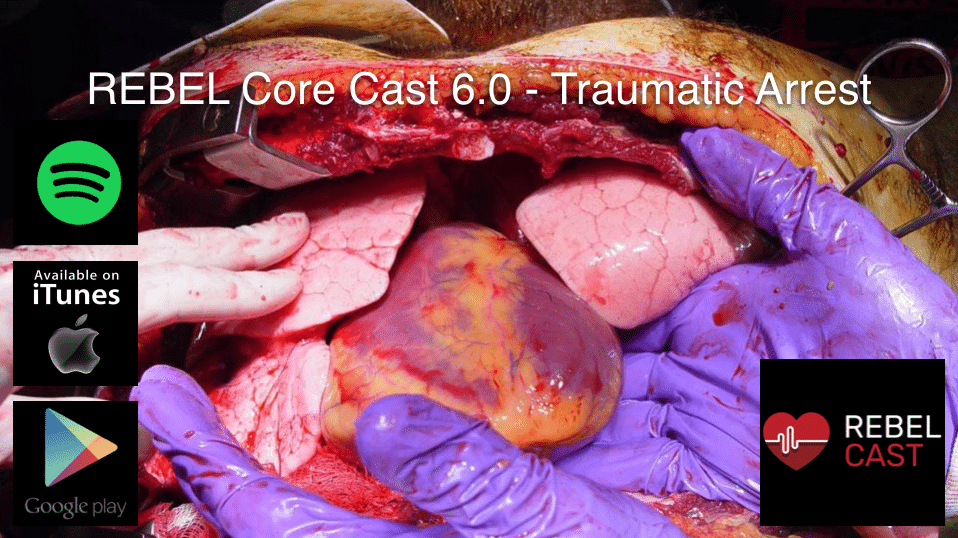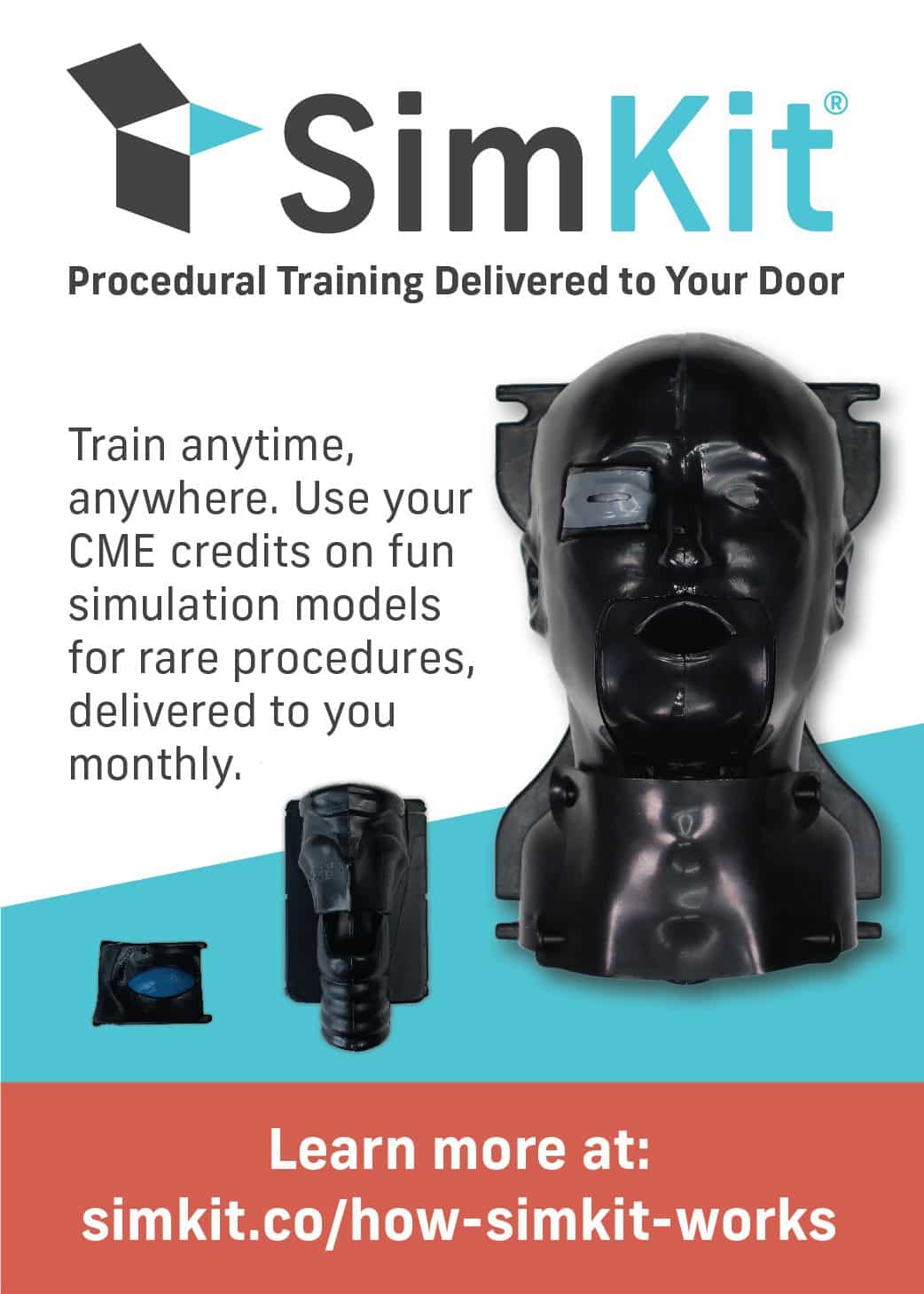
- If the patient is a clear traumatic arrest, compressions aren’t indicated and, instead we should focus on the important interventions that need to be done.
- Ultrasound can be incredibly helpful in traumatic arrest. If you’ve got a traumatic arrest patient with neither pericardial fluid nor cardiac activity, it may be reasonable to stop resuscitation without the thoracotomy.
- When decompressing the chest, it’s better to place you angiocath in the 5th intercostal space in the anterior axillary line. This helps you avoid the great vessels in the as well as the thick anterior chest wall
- And last, if you are doing a thoracostomy, you may as well go bilaterally. You are doing invasive things to a dying patient, there is no reason to guess where the problem is. Similarly, if you have to do a thoracotomy, you could consider making it a clamshell as it space to look into and making sure the right side of the chest is accessed.
REBEL Core Cast 6.0 – Traumatic Arrest
Click here for Direct Download of Podcast
References/Links:
- REBEL EM: What is the Best Anatomic Location for Needle Thoracostomy
- HEFT EMCast: Needle Thoracostomy
- EMRAP: Can Ultrasound Predict Who Will Survive After Thoracotomy?
- EMRAP: Stabbed in the Chest
- Ferrie EP et al. The right place in the right space? Awareness of site for needle thoracentesis. Emerg Med J 2005; 22(11): 788-9. PMID: 16244336
- Inaba K et al. Optimal positioning for emergent needle thoracostomy: a cadaver-based study. J Trauma 2011; 71(5): 1099-1103. PMID: 22071914
- Inaba K et al. FAST ultrasound examination as a predictor of outcomes after resuscitative thoracotomy: a prospective evaluation. Ann Sure 2015; 262(3): 512-8. PMID: 26258320
Post Peer Reviewed By: Salim R. Rezaie, MD (Twitter: @srrezaie)
Cite this article as: Anand Swaminathan, "REBEL Core Cast 6.0 – Traumatic Arrest", REBEL EM blog, March 6, 2019. Available at: https://rebelem.com/rebel-core-cast-6-0-traumatic-arrest/.



